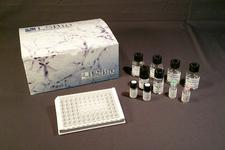order histories, retained contact details for faster checkout, review submissions, and special promotions.
Forgot password?
order histories, retained contact details for faster checkout, review submissions, and special promotions.
Locations
Orders Processing,
Shipping & Receiving,
Warehouse
2 Shaker Rd Suites
B001/B101
Shirley, MA 01464
Production Lab
Floor 6, Suite 620
20700 44th Avenue W
Lynnwood, WA 98036
Telephone Numbers
Tel: +1 (206) 374-1102
Fax: +1 (206) 577-4565
Contact Us
Additional Contact Details
order histories, retained contact details for faster checkout, review submissions, and special promotions.
Forgot password?
order histories, retained contact details for faster checkout, review submissions, and special promotions.
Mouse IgG3
The fragment antigen-binding (Fab fragment) is a region on an antibody that binds to antigens. It is composed of one constant and one variable domain of each of the heavy and the light chain. These domains shape the paratope — the antigen-binding site — at the amino terminal end of the monomer. The two variable domains bind the epitope on their specific antigens. In an experimental setting, Fc and Fab fragments can be generated in the laboratory. The enzyme papain can be used to cleave an immunoglobulin monomer into two Fab fragments and an Fc fragment. The enzyme pepsin cleaves below hinge region, so a F(ab')2 fragment and a pFc' fragment is formed. Recently another enzyme for generation of F(ab')2 has been commercially available. The enzyme IdeS (Immunoglobulin degrading enzyme from Streptococcus pyogenes, trade name FabRICATOR) cleaves IgG in a sequence specific manner at neutral pH. The F(ab')2 fragment can be split into two Fab' fragments by mild reduction.
Mouse IgG3 Target Details
| Target Name: | Mouse IgG3 |
Publications (2)



If you do not find the reagent or information you require, please contact Customer.Support@LSBio.com to inquire about additional products in development.









